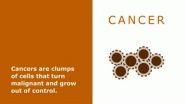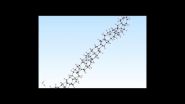(Press-News.org) Carbon dioxide emissions, the main contributor to global warming, are set to rise again in 2014 - reaching a record high of 40 billion tonnes.
The 2.5 per cent projected rise in burning fossil fuels is revealed by the Global Carbon Project, which is co-led in the UK by researchers at the Tyndall Centre for Climate Change Research at the University of East Anglia and the College of Engineering, Mathematics and Physical Sciences at the University of Exeter.
It comes ahead of the New York Climate Summit, where world leaders will seek to catalyse action on climate change.
This latest annual update of the Global Carbon Budget shows that total future CO2 emissions cannot exceed 1,200 billion tonnes – for a likely 66 per cent chance of keeping average global warming under 2°C (since pre-industrial times).
At the current rate of CO2 emissions, this 1,200 billion tonne CO2 'quota' would be used up in around 30 years. This means that there is just one generation before the safeguards to a 2oC limit may be breached.
The international team of climate scientists say that to avoid this, more than half of all fossil fuel reserves may need to be left unexploited.
Prof Corinne Le Quéré, Director of the Tyndall Centre at UEA, said: "The human influence on climate change is clear. We need substantial and sustained reductions in CO2 emissions from burning fossil fuels if we are to limit global climate change. We are nowhere near the commitments necessary to stay below 2°C of climate change, a level that will be already challenging to manage for most countries around the world, even for rich nations.
"Politicians meeting in New York need to think very carefully about their diminishing choices exposed by climate science."
The annual Global Carbon Budget, published today, includes a projection for 2014, as well as figures for 2013 by country and per capita. It is accompanied by a series of papers in Nature Climate Change, Nature Geoscience and Earth System Science Data Discussions.
Lead author of the Nature Geoscience paper, Prof Pierre Friedlingstein, from the University of Exeter said: "The time for a quiet evolution in our attitudes towards climate change is now over. Delaying action is not an option - we need to act together, and act quickly, if we are to stand a chance of avoiding climate change not long into the future, but within many of our own lifetimes.
"We have already used two-thirds of the total amount of carbon we can burn, in order to keep warming below the crucial 2°C level. If we carry on at the current rate we will reach our limit in as little as 30 years' time - and that is without any continued growth in emission levels. The implication of no immediate action is worryingly clear – either we take a collective responsibility to make a difference, and soon, or it will be too late."
Key facts and figures:
CO2 emissions from burning fossil fuel are projected to rise by 2.5 per cent in 2014 - 65 per cent above 1990 levels, the reference year for the Kyoto Protocol
China, the USA, the EU and India are the largest emitters – together accounting for 58 per cent of emissions.
China's CO2 emissions grew by 4.2 per cent in 2013, the USA's grew by 2.9 per cent, and India's emissions grew by 5.1 per cent.
The EU has decreased its emissions by 1.8 per cent, though it continues to export a third of its emissions to China and other producers through imported goods and services.
China's CO2 emissions per person overtook emissions in the EU for the first time in 2013. China's emissions are now larger than the US and EU combined. 16 per cent of China's emissions are for goods and services which are exported elsewhere.
Emissions in the UK decreased by 2.6 per cent in 2013 caused by a decline in the use of coal and gas. However the UK exports a third of its emissions by consuming goods and services which are produced elsewhere.
CO2 emissions are caused primarily by burning fossil fuels, as well as by cement production and deforestation. Deforestation accounts for 8 per cent of CO2 emissions.
Historical and future CO2 emissions must remain below a total 3,200 billion tonnes to be in with a 66 per cent chance of keeping climate change below 2°C. But two thirds (2,000 billion tonnes) of this quota have already been used.
If global emissions continue at their current rate, the remaining 1,200 billion tonnes will be used up in around 30 years – one generation.
Global emissions must reduce by more than 5 per cent each year over several decades to keep climate change below 2°C.
This emission quota implies that over half of proven fossil reserves might have to remain unused in the ground, unless new technologies to store carbon in the ground are developed and deployed in large quantities.
INFORMATION:
The 'Global Carbon Budget 2014', led by UEA Tyndall Centre director Prof Le Quéré is made available in the journal Earth System Science Data Discussions on September 21, 2014.
It is accompanied by a Nature Geoscience paper 'Persistent growth of CO2 emissions and implications for reaching climate targets', led by Prof Friedlingstein from the University of Exeter.
Meanwhile 'Sharing a quota on cumulative carbon emissions' led by Dr Michael Raupach director of the Climate Change Institute at the Australian National University, and a comment article 'Betting on negative emissions', led by Dr Sabine Fuss, at the Mercator Research Institute on Global Commons and Climate Change in Germany, are published in Nature Climate Change.
For more information see the Global Carbon Atlas, which allows users to explore, visualise and interpret data of global, regional and national emissions, visit http://www.globalcarbonatlas.org.
CO2 emissions set to reach new 40 billion ton record high in 2014
Remaining CO2 emission 'quota' may be used up in one generation and more than half of all fossil fuel reserves may need to be left untapped
2014-09-21
ELSE PRESS RELEASES FROM THIS DATE:
From light into matter, nothing seems to stop quantum teleportation
2014-09-21
Physicists at the University of Geneva (UNIGE) have succeeded in teleporting the quantum state of a photon to a crystal over 25 kilometres of optical fibre. The experiment, carried out in the laboratory of Professor Nicolas Gisin, constitutes a first, and simply pulverises the previous record of 6 kilometres achieved ten years ago by the same UNIGE team. Passing from light into matter, using teleportation of a photon to a crystal, shows that, in quantum physics, it is not the composition of a particle which is important, but rather its state, since this can exist and persist ...
Program predicts placement of chemical tags that control gene activity
2014-09-21
Biochemists working at the University of California, San Diego, have developed a program that predicts the placement of chemical marks that control the activity of genes based on sequences of DNA. They describe their analysis and report results from its application to human embryonic cells in a paper published in Nature Methods online September 21.
"All of our cells have the same blueprint, the same DNA, although they serve separate functions," said John Whitaker, lead author of the report. "Skin cells protect, nerve cells send signals, and these differences emerge because ...
Battling superbugs
2014-09-21
CAMBRIDGE, MA -- In recent years, new strains of bacteria have emerged that resist even the most powerful antibiotics. Each year, these superbugs, including drug-resistant forms of tuberculosis and staphylococcus, infect more than 2 million people nationwide, and kill at least 23,000. Despite the urgent need for new treatments, scientists have discovered very few new classes of antibiotics in the past decade.
MIT engineers have now turned a powerful new weapon on these superbugs. Using a gene-editing system that can disable any target gene, they have shown that they can ...
Immune system of newborn babies is stronger than previously thought
2014-09-21
Contrary to what was previously thought, newborn immune T cells may have the ability to trigger an inflammatory response to bacteria, according to a new study led by King's College London. Although their immune system works very differently to that of adults, babies may still be able to mount a strong immune defense, finds the study published in the journal Nature Medicine.
Our immune system is made up of several different types of immune cells, including neutrophils which play an important role in the frontline defense against infection, and lymphocytes: B cells which ...
Uncovering the forbidden side of molecules
2014-09-21
Researchers at the University of Basel in Switzerland have succeeded in observing the "forbidden" infrared spectrum of a charged molecule for the first time. These extremely weak spectra offer perspectives for extremely precise measurements of molecular properties and may also contribute to the development of molecular clocks and quantum technology. The results were published in the scientific journal Nature Physics.
Spectroscopy, the study of the interaction between matter and light, is probably the most important method for investigating the properties of molecules. ...
Magnetic fields make the excitons go 'round
2014-09-21
CAMBRIDGE, Mass-- A major limitation in the performance of solar cells happens within the photovoltaic material itself: When photons strike the molecules of a solar cell, they transfer their energy, producing quasi-particles called excitons — an energized state of molecules. That energized state can hop from one molecule to the next until it's transferred to electrons in a wire, which can light up a bulb or turn a motor.
But as the excitons hop through the material, they are prone to getting stuck in minuscule defects, or traps — causing them to release their energy ...
Engineered proteins stick like glue -- even in water
2014-09-21
CAMBRIDGE, MA -- Shellfish such as mussels and barnacles secrete very sticky proteins that help them cling to rocks or ship hulls, even underwater. Inspired by these natural adhesives, a team of MIT engineers has designed new materials that could be used to repair ships or help heal wounds and surgical incisions.
To create their new waterproof adhesives, the MIT researchers engineered bacteria to produce a hybrid material that incorporates naturally sticky mussel proteins as well as a bacterial protein found in biofilms — slimy layers formed by bacteria growing on a surface. ...
Cancer cells adapt energy needs to spread illness to other organs
2014-09-21
Want to understand why cancer cells metastasize? Think of Sparta.
Ancient Greek warriors were fed a special diet that better prepared them for the demands of battle on distant fields. Cancer cells that metastasize may do the same thing according to a new study revealing previously unknown differences between cancer cells that continue to grow at the original tumor site, and those that travel to other organs.
Given that a cancer cell's unyielding ability to metastasize is the primary cause of cancer-related death, understanding how they successfully migrate can be lifesaving.
Scientists ...
Stanford researchers create 'evolved' protein that may stop cancer from spreading
2014-09-21
VIDEO:
Early but promising tests in lab mice suggest that a bioengineered 'decoy' protein, administered intravenously, can halt the spread of cancer from the original tumor site. Years of subsequent tests...
Click here for more information.
A team of Stanford researchers has developed a protein therapy that disrupts the process that causes cancer cells to break away from original tumor sites, travel through the blood stream and start aggressive new growths elsewhere in the body.
This ...
Smallest possible diamonds form ultra-thin nanothreads
2014-09-21
VIDEO:
For the first time, scientists have discovered how to produce ultra-thin 'diamond nanothreads' that promise extraordinary properties, including strength and stiffness greater than that of today's strongest nanotubes and polymers....
Click here for more information.
For the first time, scientists have discovered how to produce ultra-thin "diamond nanothreads" that promise extraordinary properties, including strength and stiffness greater than that of today's strongest ...
LAST 30 PRESS RELEASES:
Findings of large-scale study on 572 Asian families supports gene-directed management of BRCA1 and BRCA2 gene carriers in Singapore
Many children with symptoms of brain injuries and concussions are missing out on vital checks, national US study finds
Genetic hope in fight against devastating wheat disease
Mutualism, from biology to organic chemistry?
POSTECH Professor Yong-Young Noh resolves two decades of oxide semiconductor challenges, which Is published in prestigious journal Nature
Could fishponds help with Hawaiʻi’s food sustainability?
International network in Asia and Europe to uncover the mysteries of marine life
Anthropologist documents how women and shepherds historically reduced wildfire risk in Central Italy
Living at higher altitudes in India linked to increased risk of childhood stunting
Scientists discover a new signaling pathway and design a novel drug for liver fibrosis
High-precision blood glucose level prediction achieved by few-molecule reservoir computing
The importance of communicating to the public during a pandemic, and the personal risk it can lead to
Improving health communication to save lives during epidemics
Antimicrobial-resistant hospital infections remain at least 12% above pre-pandemic levels, major US study finds
German study finds antibiotic use in patients hospitalised with COVID-19 appears to have no beneficial effect on clinical outcomes
Targeting specific protein regions offers a new treatment approach in medulloblastoma
$2.7 million grant to explore hypoxia’s impact on blood stem cells
Cardiovascular societies propel plans forward for a new American Board of Cardiovascular Medicine
Hebrew SeniorLife selected for nationwide collaborative to accelerate system-wide spread of age-friendly care for older adults
New tool helps identify babies at high-risk for RSV
Reno/Sparks selected to be part of Urban Heat Mapping Campaign
Advance in the treatment of acute heart failure identified
AGS honors Dr. Rainier P. Soriano with Dennis W. Jahnigen Memorial Award at #AGS24 for proven excellence in geriatrics education
New offshore wind turbines can take away energy from existing ones
Unprecedented research probes the relationship between sleep and memory in napping babies and young children
Job losses help explain increase in drug deaths among Black Americans
Nationwide, 32 local schools win NFL PLAY 60 grants for physical activity
Exposure to noise – even while in the egg – impairs bird development and fitness
Vitamin D availability enhances antitumor microbes in mice
Conservation actions have improved the state of biodiversity worldwide
[Press-News.org] CO2 emissions set to reach new 40 billion ton record high in 2014Remaining CO2 emission 'quota' may be used up in one generation and more than half of all fossil fuel reserves may need to be left untapped




